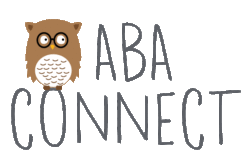Motivating Operations
An establishing operation (EO) is a motivating operation that increases the value of a reinforcer and increase the frequency in behavior that provides access to the reinforcer (Cooper, Heron & Heward, 207, p. 695). An example of an EO is skipping lunch and having an empty stomach. By being hungry it increases the value of food and increases the behaviors that gain access to food.
An abolishing operation (AO) is a motivating operation that decreases the value of a reinforcer (Cooper et al., 2007, p. 263). For example, after having juice, the value of juice as a reinforcer could potentially decrease. Another example of an AO, could be after running a marathon the value of running has decreased for the athlete.
A conditioned motivating operation is when an item or an event has been trained to have a reinforcing value due to previously learning the association (Cooper, et.al, 2007, p. 384). An example of a CMO would be needing a car key to turn on a car. The relationship between a car key and car is a function of learning in the past.
A unconditioned motivating operation is when an item or situation has a reinforcement value that does not depend on previously learning about it (Cooper, et.al, 2007, p.707). A clear example, if you are stranded on an island without food the need to satisfied the hunger would be reinforcing. This association would not have to have been previously learned.
A value altering effect is when the effectiveness of a reinforcing stimulus, event or tangible object is changed to either be more or less effective based on the surrounding situations, or the result of a motivating operation. (Cooper, et.al, 2007, p. 707). An example of this is access to the internet. The reinforcing effectiveness of access to the internet changed based on overindulgence or complete restriction of access to the internet.
A behavior altering effect occurs when the effectiveness of a reinforcer on the frequency of a behavior is changed by the same motivating operation that maintained the current frequency of behavior (Cooper, et.al, 2007, p. 375). For example, if someone baths everyday this would be their current frequency of bathing behavior. However, if they hurt their back and realize that bathing reduces their back pain a behavior altering effect would then be that the bathing behavior increases because of the reinforcement of pain relief. Similarly, if the person hurt their back and realized that climbing down into the bathtub caused more pain, a behavior altering effect might be that their bathing behavior decreases because of the positive punishment of additional back pain.
A surrogate CMO (CMO-S) has the same effect as the MO it was paired with has (Cooper, et.al, 2007, p. 384). An example of this visually you often see snow when it is cold, and then it starts to snow when it is warm. In this case, the visual of the snow may cause a person to put more clothes on even though the temperature has not significantly changed.
A reflexive CMO (CMO-R) makes the removal of itself a reinforcement in itself. This can happen when a stimulus has come before either a worsening or improvement of a situation (Cooper, et.al, 2007, p. 384). CMO-Rs can be thought of as warning signals. An example would be if a student had experience in a classroom when a teacher said, “Let’s get to work,” it would serve as a warning signal and could evoke escape behavior due to the threat of difficult work to follow.
A transitive CMO (CMO-T) makes something else into a reinforcement but does not change itself (Cooper, et.al, 2007, p. 384). An example of this is that the value of having a pen is greater when someone gives you a piece of paper and tells you to fill it out. The paper has not changed in this example, but serves to increase the value of something else, in this case, a writing utensil.




Thanks so much for posting this breakdown. I was having a tough time with these concepts. Great examples for CMO-T CMO-R and CMO-S
Hello, how is this positive reinforcement, “a behavior altering effect might be that their bathing behavior decreases because of the positive reinforcement of additional back pain”?
“a behavior altering effect might be that their bathing behavior decreases because of the positive reinforcement of additional back pain.”
Shouldn’t this be positive punishment?
Yes! You’re right! Changed! Thanks for catching that!
Yes! You’re right! Changed! Thanks for catching that!
This is a very insightful and informative comment. Thank you to the author for sharing this information.
This is a very insightful and informative comment. Thank you to the author for sharing this information.